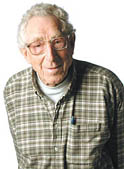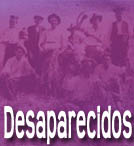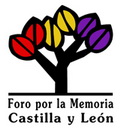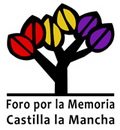Clarence Kailin
 En el mes de octubre falleció el brigadista norteamericano Clarence Kailin. Sobre su figura puede consultarse un interesante artículo
En el mes de octubre falleció el brigadista norteamericano Clarence Kailin. Sobre su figura puede consultarse un interesante artículo
Unrepentant Red: Clarence Kailin looks back on a lifetime of fighting the good fight
Esty Dinur on Monday 10/26/2009
Clarence Kailin died Sunday, October 25, at the age of 95. The Madisonian was a lifelong socialist, union supporter and activist for peace and social justice. He was also one of the last surviving veterans of the Abraham Lincoln Brigade, a group of volunteers from the United States who fought with the International Brigades against fascist forces in the Spanish Civil War in the late ‘30s. The Madison Veterans for Peace chapter is named for Kailin, and he was instrumental in the placing of a memorial to Wisconsin veterans of the Brigade in James Madison Park.
The following cover story by Esty Dinur was published in the January 5, 2001, edition of Isthmus.
In August 1991, after the collapse of the Soviet Union, The Capital Times ran a somewhat derisive front-page article about Clarence Kailin under the headline, “Madison’s Last Communist?” Kailin recounts what happened next:
“I went to the Labor Day celebration at the Labor Temple, and dozens of people showed their support. The late journalist George Vukelich suggested that I make a T-shirt, but that was too complicated, so I decided to do a button that said, ‘Madison’s Last Communist.’ A piece in Isthmus said I’d give these buttons for free to anyone who would wear them, just as health care and education were free in the Soviet Union.»
In response, more than 100 people wrote and asked for buttons. Kailin decided it should not stop at that, so he used the name list to organize a potluck dinner at Pres House. The Socialist Potluck was born.
Today, the potluck’s mailing list contains 400 names. Its monthly programs draw as many as 100 people to share a meal, announce upcoming events and engage in at times heated discussion and debate. Recent topics include Fidel Castro’s visit to New York, the situation in the Middle East and organizing for social change after the elections.
Norm Stockwell, operations manager for WORT radio, says the potluck’s origins illustrate a larger point about Kailin: «He always approaches activism in terms of movement-building, not just isolated actions. He likes to ask questions like, ‘What does this mean to us as socialists?’”
A decade after the collapse of Soviet communism, at a time when socialism has been upstaged by environmentalism, feminism and other -isms, Clarence Kailin remains an unrepentant red. He still thinks capitalism is socially and morally bankrupt and that socialism holds the best hope for the future.
Capitalism, says Kailin, has created a system in which 325 of the world’s richest people own as much wealth as the poorest two billion, who live on a dollar or two a day. “A decent social order would not allow exploitation and accumulation of such wealth,” he says. Nor would it allow privatization of public services, corporate welfare, preferential tax laws for the rich, globalization, sweatshops, militarism and intervention in other countries.
Kailin clicks them off: “Iran in 1953, Guatemala in 1954, Vietnam in the ’60s, Chile in 1967, Nicaragua in the ’80s — all cases where the U.S. helped topple popular governments, creating total chaos and often setting up lifetime military dictators.”
At 86, Kailin is as busy as ever. Besides his wide range of causes and involvements, he still finds time to climb the bluffs of Devil’s Lake at least twice a week.
“He’s still one of the few people on the Madison left who don’t just intellectualize,» says his daughter, Julie. «He’s a worker. A real working-class intellectual who always ends up alone with the broom at the end of the potluck.”
Throughout his many years as an activist, Kailin has forged many alliances, even among people with whom he disagrees. While he considers himself an atheist («science answers the questions I need to know, not faith»), he has often made common cause with religious people on such issues as combating racism, the prison system and U.S. interventionism.
“My difference with them,” he says, “is that they work at it piecemeal, which is important but has its limits. As a socialist I see many of the social disorders stemming from capitalism itself. You have to see the system of capitalism in its entirety to understand how the major problems of modern society can be attributed to it.”
Environmentalists are another group Kailin finds much in common with. The need for socialism is becoming more urgent than ever before, he says, as is clear from the destruction, much of it irreversible, of the environment. Green activists, he says, “are doing very important work even if they’re not socialist. They attack the problem incrementally and could maybe be called reformists, but capitalism can’t be reformed, and the fight needs to go farther than that into a change of the system itself.”
When will that happen? “We have no guarantee that this would happen. Marx himself said in the Communist Manifesto that the contending classes may destroy themselves. We don’t guarantee anybody anything, but we fight for it and hope that we can be successful.”
Teach your children well
The son of Jewish immigrants who arrived in Paoli, Wis., at the beginning of the 20th century, Kailin has four children, four grandchildren and five great-grandchildren. Many of them follow in his footsteps. He, in turn, follows in his father’s, who became a socialist in his early 20s after meeting Vladimir Lenin in London.
Louis Kailin, who had been one of only four people in a Belorussian city of 6,000 who could read and write, “hated the corporations and rich people.” Mother Stella was a housewife who “had her sympathies but didn’t talk about them.” Clarence was born in 1914 in the old Greenbush neighborhood, lived first on Park Street, then on Mound Street near a synagogue. “My father went there to talk to people but didn’t worship, as he was an atheist. Mother never went.»
In 1941, Kailin married Margaret (Maggie), who came from a “hard-core Catholic farm family in Watertown but wasn’t religious herself.” Their son, John, is executive director of the American Federation of Television and Radio Artists Union in Philadelphia, which recently concluded a successful strike against advertisers. “A brilliant strike and a very important victory for the labor movement,” says Kailin. Laurel works with Job Service for the state Department of Workforce Development. Julie has a Ph.D. and developed a curriculum about race relations in education for the UW-Milwaukee. She also teaches anti-racism courses to practicing teachers. Susan lived and worked in the Soviet Union for 10 years.
Clarence and wife Maggie have been separated for 25 years, but all three daughters insist in separate interviews that Maggie should receive as much recognition as Clarence. Her insights, hard work and commitment were just as strong and effective as Clarence’s, they say, but because of cultural norms that kept the woman at home and because of her quiet nature, she hasn’t received the appreciation she deserves.
The daughters also agree on why the Kailin children remain politically progressive and active. “We were never preached to,» says Laurel «There was never pressure to believe something or another. Our parents taught us by example.” Adds Susan, “Sometimes we wished our parents would put their energy into business instead of activism, because then we would have been rich. Instead, we got rich internal lives. They taught us that you don’t buy in a store where the workers are treated badly, even if you can buy things cheaper there. They taught me to be sensitive to injustice and see the terrible toll of racism — by giving me books to read and telling me personal stories.”
Julie offers an example of the parenting she received. She was arrested in Milwaukee in 1966 along with Father Groppi and a group of young people during a demonstration against racism. They had to pay a $100 fine or go to jail. The parents of the other white, middle-class demonstrators, recalls Julie, “were really afraid about their children going to jail. Everybody was scrambling to get the money. My father casually said, ‘Why don’t you guys just go to jail?’”
About 10 years ago, Kailin’s granddaughter, Syovata Edari, entered an essay contest sponsored by the Wisconsin Labor History Society, writing about an episode from her family’s past.
The year was 1949. Kailin heard about a factory farm near Mazomanie that employed some 100 black field hands from Florida. “The conditions of these people were so horrendous that they went on strike,” he says. “I offered our house as headquarters for the strike. We got publicity and raised a lot of money for the strikers. Our house was the place for meetings, sick kids, dinners. It was quite a time. At that time you didn’t see black and white people mixing like that, so the cops were there all the time, trying to intimidate us.”
Daughters Laurel and Julie remember the Madison police stationed in front of their house. “I was afraid of them,” says Laurel, “I didn’t think of them as our friends.” Nor were FBI agents. “White men with suits coming to our door weren’t friends,” says Julie. “I felt we had to be very careful with them.” Susan, perusing her father’s FBI file, obtained through the Freedom of Information Act, notes wryly that the Kailins “were harassed the most when they weren’t involved in anything political. There is nothing there about crimes or suspicions of crimes, but there are many references to black people coming into the house.”
The strike went on for 30 days. Then the owner of the farm called in the sheriff, who put the workers on buses and sent them back home. Two of them jumped the bus in Chicago and hitchhiked back to Madison. “We took care of them until they found jobs, and one of them, Fred Blue, is still in Madison,” says Kailin.
Edari, now in law school, won first place and $500 for her essay and used that money to go visit her grandmother in Kenya.
Fighting Franco
Clarence Kailin was 22 when he joined the Abraham Lincoln Brigade and went to fight alongside the anti-fascist Republicans in Spain. He was there for two years. As he describes it, “the Spanish people had elected a popular front in early 1936, and the Catholic Church, landlords and the army worked to overthrow this government. Generals, including Francisco Franco, staged an uprising, and the Spanish people came out to the streets and suppressed the uprising, so the immediate overthrow of the government didn’t happen.»
The governments of Britain, Italy and France, he says, under the guise of «nonintervention,” allowed fascist forces to continue sending materiel to the Franco and the Spanish fascists, while shutting off supplies to the Republicans. The U.S. officially remained neutral, although U.S. companies provided critical support to Franco and his allies.
Kailin was among about 2,800 members of the Abraham Lincoln Brigade who joined the fight against Franco. He carried a gun and fought in combat for two years. The fascists prevailed; about 800 of Kailin’s fellow brigade members were killed.
«There were a lot of socialists and communists among us, a lot of Jews who saw it as an opportunity to fight against Hitler and anti-Semitism,» says Kailin. «We believed that if Spain, which was the first country to stand up to fascism, was beaten, then World War II would be inevitable, and we were right. The big democracies allowed that to happen, and it cost something like 50 million lives, huge resource waste, a lot of suffering. I learned how capitalism functions, the consistent direction in which capitalism goes and how it always sustains itself at the expense of the working class.”
Today, there are about 125 surviving members of the Abraham Lincoln Brigade. In October 1999, a monument to Wisconsin brigade veterans was erected in James Madison Park next to Gates of Heaven Synagogue. Kailin raised the funds, decided on the design and convinced the Parks Department and then the Common Council and the mayor to support it, all within 10 months.
Ned Powell, a longtime Madison activist, tells how Kailin read about a similar monument in Seattle and said, “I’m going to do it too.” “When Clarence gets on something, it gets done,” says Powell. Kailin is now advising and assisting Bay-area veterans who are planning to erect a monument of their own.
Worker’s world
In 1967, Kailin, noting that African-American history wasn’t taught in Madison schools, organized a group to work for change. At the same time, he held black history classes at his home and wherever he was invited. The pressure he exerted prompted the school board to change textbooks.
Kailin wrote A Black Chronicle, a book based on the classes he had been teaching. It was printed by the Wisconsin Department of Public Instruction’s human relations director, William Colby, a black man who, according to Kailin, was considered «too radical» for a job with the Madison school district. The first edition came out around 1974 and was the department’s most popular publication. A second, revised edition was printed in 1979 and a third in 1991.
Julie Kailin remembers her father, home from his evening job, “sitting all night at his Smith-Corona and writing this book. He’d sleep for a few hours and wake up to go to his day job.”
A talented photographer, Kailin worked in many jobs, often forced to leave for political reasons. The family’s life was interesting but lacking in material comforts, his daughters remember. Before going to Spain, Kailin worked in a paper-box factory where he unsuccessfully tried to organize a union. Upon returning he worked at a liquor store and as a cabdriver. “You should look at my FBI file,» he chuckles. «It’ll tell you the exact dates of all my jobs.”
During World War II, Kailin trained radio operators at Truax Field and then at the Navy School on University Avenue. The FBI told the Navy School commander that Kailin was a subversive element; Kailin says the commander responded that they should spend their energies looking for Nazis. After the war, Kailin worked at the Madison factory Gisholt, where he was very active in the United Steel Workers of America union and eventually laid off. He worked for a carp fishing outfit and as a janitor and finally landed at the UW-Madison department of photography, where he stayed for almost 18 years and was very active in the AFSCME union.
“He was fired fairly regularly because of his convictions,» says Laurel Kailin, «but we never knew how hard things were because he didn’t complain, even when he worked two or three jobs at a time.”
Laurel remembers one summer when her father was fishing all the time. She found out only recently that he was selling fish to feed his family. She and Julie remember helping him clean buildings on his second-shift job, all the more difficult because he is allergic to dust. “He was the best janitor I’ve ever seen — meticulous,” Laurel attests. «He took pride in every job that he did.”
But his union affinities were a constant source of grief. Kailin recalls that when he worked with the union at Gisholt, “I had everybody wearing Progressive Party buttons in the union building, but this was shattered by the McCarthy period. People got scared, and I was left holding the bag. But my situation wasn’t near as bad as that of many others who were followed by the FBI and couldn’t find any job, those who were jailed.
“That was a very bad period for this country and especially destructive for the trade union movement. They were forced to take anti-communist oaths, and the unions which refused to do this were expelled from the AFL-CIO, splitting the labor movement. It never really recovered from it. They throw themselves now into the hands of the Democratic Party, which isn’t doing much for them. They give them a blank check without making demands. This is part of how capitalism works against labor.”
No regrets
Kailin remained loyal to the socialist cause and supportive of the Soviet Union even during the Stalin years, when, some say, more Soviet people were killed by the state than were by Hitler’s Germany. Was he just being naive or did he agree with the purges that Stalin initiated?
Kailin explains that the leadership of the Communist Party USA knew what was happening but the rank and file didn’t. “We believed in the necessity of socialism, and that is what kept me in the party. The U.S.S.R. was the first socialist country, and we saw nonstop attacks on it by a rabid, anti-communist, capitalist establishment.”
Today, he says, “we have tons of solid historical information allowing us to understand the deviations from democratic socialism — going back to the very first years of the Revolution — that led to the present debacle. We are able to draw a sharp line between Stalinism and socialism. We didn’t have it then.”
But even with the benefit of hindsight, Kailin has “no regrets about defending the Soviet Union at the time. It was important to defend socialism, even if that wasn’t real socialism. No movement comes into existence fully developed. It’s a long process of growth, of trial and error, always on new ground. So you have to figure out, day by day, what to do. If the machinery is sufficiently democratic, one has the freedom to experiment and to make corrections.»
Kailin was a member of the American Communist Party from 1935 to 1949 and didn’t leave voluntarily. The party, he explains, followed the example of the Soviet party.
“Their style of work was very undemocratic, bureaucratic and dictatorial,» he says. «You couldn’t really discuss differences with them.” Twelve party leaders were arrested for their beliefs, put on trial in New York and received five-year sentences. Kailin was expelled when he disagreed with the party’s decision to go underground.
He rejoined in 1970, during the Vietnam War, and despite disagreements stayed until 1991, when the party held a convention in Cleveland. Together with about 750 other members, he signed a document asking the party to take a new look at itself and become more democratic.
“They wouldn’t hear about it so we broke away, together with 400 to 500 more members, and formed the Committees of Correspondence,» says Kailin. «It was miserable how the party treated some very good people who joined the Committees, like Herbert Aptheker, one of the leading historians in the party for many years, who led the way on writing about black history. They treated him like he was an outcast.»
What does he think of the American Communist Party today? «In my opinion, they haven’t changed. Party leader Gus Hall recently died at the age of 90, but he probably really died 20 years ago.”
Julie Kailin says her father was never dogmatic. “He always had a vision that socialism was the way of the future, but he was open to criticism and questioning.” Susan Kailin, who spent a decade in the Soviet Union, recalls that her father “was angry at the way people misused the ideals that he believed in.”
Asked why he didn’t leave the Communist Party earlier, Kailin (who in the recent presidential election supported Ralph Nader) responds, “One might ask why U.S. Republicans and Democrats remain loyal to their parties in the face of U.S. military and CIA murderous depredations all over the world. The U.S. has intervened over 100 times in the affairs of other countries, but none of this has become a matter of public discussion. It’s because the press here is almost totally controlled. How many Americans really know? And this is not Russia. Look at our attacks on Cuba today. For what purpose? And why embrace China?”
Surveying the current political landscape, says Kailin, “It’s hard to imagine a just future. How would we even get to where people can control their destinies? We have an example in South Africa, where they were able to overthrow the powerful apartheid system. It took generations of struggle and sacrifice to bring that about. You have to have the masses of people decide to withdraw their support from the system. That’ll take a long time.
«But history does strange things. We don’t know what’ll happen. I won’t make predictions, but we do know what we’d like to see and we work for it.”





























